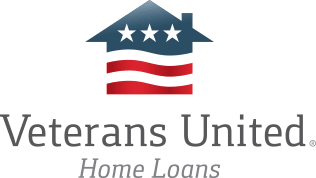What Is a Down Payment, and How Does It Work?
A down payment is a large sum of money paid towards the purchase of your home during the initial buying process. This sum is subtracted from your mortgage loan. Many lenders require a down payment and most people like to aim for at least 10% down. For example, 10% percent of a $350,000 home would be $35,000, which can take some time to save up.
Homebuyers who pay less than 20% down on their home purchase will have to purchase Private Mortgage Insurance (PMI) as well. This can cost an additional .05% to 1% of the home purchase price per year. For example, on a $350,000 home, PMI could cost between $1,750-$3,500 per year. Many times this cost is broken down monthly and added to your mortgage payment, and you can ask to have it removed once your home has 20% equity.
Alternatively, a lower down payment will mean a higher monthly mortgage payment, and the lender might require you to have a higher credit score when applying.
Here are two examples of the same loan with and without a down payment:
- $350,000 home, 20% down, 4.25% APR; $1,692 monthly payment with taxes, fees, and insurance
- $350,000 home, 0% down, 4.25% APR; $2,228 monthly payment with taxes, fees and insurance
Top Picks: Low or No Down Payment Lenders
Can You Get a Mortgage With No Down Payment?
While many lenders require a down payment, there are some types of home loans that can qualify for a low or no down payment. A low down payment is anything under 5%, where a no-down-payment mortgage requires no extra money at closing except the standard closing costs.
While a 20% down payment might seem like the industry standard, lower down payments are actually more popular. According to the National Association of Realtors, First-time buyers on average put 7% down, while repeat buyers put an average of 16% down. The survey also revealed that first-time buyers paid for their down payment with savings while most repeat buyers had a downpayment from a recent home sale.
Today's Mortgage Rates
Today
3 Months Ago
30-year fixed
15-year fixed
5/1-year ARM
Types of Low or No Down Payment Loans
There are several different government-backed housing loans that make homeownership and affordable possibility. See if you qualify for one of these programs:
Federal Housing Administration (FHA) loan
FHA loans are insured by the Federal Housing Administration and available for first-time home buyers. Buyers must have a credit score of 580 or higher and pay a 3.5% down payment.
Not only do FHA loans come with PMI, but you must also use an FHA-approved lender and your home purchase must be approved for an FHA loan. This means that potential buyers will have to purchase a home appraisal and inspection before the home purchase is approved and funded.
Veterans Affairs (VA) Home Loan
VA home loans are available to active and former military personnel and their survivors. Military-connected buyers can finance a home 100% without a down payment or PMI. However, there is a 2.3% funding fee for a borrower’s first VA loan. Repeat VA home loan borrowers will have to pay a funding fee of 3.6% unless they want to put 5% down.
USDA loan
USDA loans are insured by the United States Department of Agriculture and are low-interest mortgages with zero down payments designed for low-income Americans who don't have a down payment saved. You must use a USDA loan to buy a home in a designated area that covers several rural and suburban locations. While there are no credit minimums for a USDA loan, borrowers with a score under 640 will be subject to stricter, manual underwriting.
Conventional loan (Conventional 97)
Many lenders will allow first-time homebuyers to purchase a home with 3% down. This conventional loan is not backed by the government and buyer approval varies by lender. However, most lenders require a credit score of 620 or higher and a debt-to-income ratio (DTI) of no more than 43%.
How Do I Apply for a No Down Payment Mortgage?
When you’re ready to apply, it’s time to send your lender copies of the relevant paperwork. Mortgage lenders are looking to make sure your debt-to-income ratio remains below 28% of your monthly income with the addition of monthly mortgage payments. If you’re putting down less than 20% down payment on your mortgage through an FHA or conventional loan, you also have private mortgage insurance costs to consider, which are rolled into your monthly payment.
Now is the time for a hard credit pull. This means the lender officially checks your credit score to determine your interest rate. A credit score is a 3-digit number that is used as a shorthand for lenders to understand how likely you are to fully repay a loan based on your credit and repayment history. The higher your credit score, the more likely you are to qualify for a lower interest rate.
Finally, once you look over your rate and terms, you get to sign the documents to close on your mortgage.
4 Recommended Lenders for Low or No Down Payment Mortgages
If one of these low or no-down-payment loans sounds right for you, continue your home buying process by researching lenders. These are our top recommended lenders:
Ranked #1 in customer satisfaction for 11 years in a row, Quicken Loans is one of the most reputable home lenders around. Quicken Loans offers several loan types, including VA and FHA loans. You can also use their ‘YOURgage’ program which offers flexible loan terms for most homebuyers.
Read the full Quicken Loans review.
AmeriSave Mortgage is a direct lender that offers Conventional, FHA, VA, and USDA mortgages in every state except New York. AmeriSave is an ideal lender for buyers who want a streamlined online application process with the option of personalized customer support if needed.
Read the full AmeriSave Mortgage review.
While not available in all 50 states, Better uses a completely digital process to streamline the homebuying process and avoid pesky origination and lender fees. Better’s unique application process also evaluates buyers on many different levels, reducing the need for an excellent credit score
As long as you meet the requirements for a VA loan, Veterans United can help. Veterans United loans require 0% down, but a 2.3% funding fee if this is your first VA loan. Military-connected borrowers can expect a 15- or 30-year fixed rate from Veterans United.
Read the full Veteran's United Review.
Pros and Cons of Low and No Down Payment Loans
As with all loans and lenders, there are pros and cons. Evaluate each to see if taking out a low or no down payment loan is the right move for your financial future.
Pros
- Less Money Upfront: You don’t have to save for years upon years to purchase the home of your dreams. In some cases, you might even save money on your mortgage versus rent payments.
- Faster Move-In Time: Since you need a smaller down payment, you can capitalize on the housing market when the time is right.
- Keep Your Cash Safe: Throwing your whole life savings to your home can put you in a financial pickle later on. A smaller down payment keeps your money saved and liquid in case of an emergency.
Cons
- Higher Costs: Expect to pay more in your monthly mortgage payments, as well as PMI insurance.
- Higher Interest Rate: Depending on the loan and lender, you might not cement the most competitive APR rates.
- Limited Housing Options: FHA and USDA loans come with home purchasing rules and limitations. For example, you won’t be able to buy a fixer-upper with an FHA loan.
Should You Go with a Low or No Down Payment Loan?
The rent life isn’t for everyone, especially for individuals who want to start a family or have a place that truly belongs to them. As long as your finances are in order and you do your research on which loan and lender are right for you, then taking the first steps toward homeownership can be right for you.
.20200607063304.jpg)




